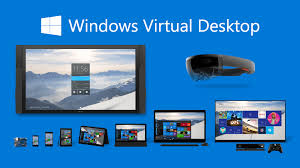When one is dealing with large quantities of food, it is important to have a way to monitor it all. Over the last few decades, food safety has become a vital prospect for numerous industries to consider. However, it can be tricky to manage everything by oneself. If your industry deals with large batches of prepared meals, dairy products or even raw materials and ingredients, it is vital to invest in food management systems.
However, by investing in and operating a digital management system, one can easily track a variety of details. An effective software will allow the user to closely monitor the state of the food. It is important to be able to keep an eye on the expiration dates, storage requirements as well as the quantities of food stored. Food audit systems enable everyone to make certain that they are effectively using all the food in a responsible manner. They also help ensure that little to no food waste is generated.
Choosing the right management system can be tricky. One needs to be on the lookout for the following features before purchasing software.
Interactive and Thorough Communication
When it comes to food, it is important to have all the required information. No matter which industry is using the food management system, it is important to have a streamlined communication system among various people in the supply chain. By ensuring that your food management system has the feature to collate all this information, you can ascertain that everyone on the supply chain is able to manage the food correctly.
Management Possibilities
Food management software should be able to provide different management styles and profiles. One should be able to thoroughly organise the collected information and sort through it using a priority feature. If a manager is handling the food, they should be able to prioritise the customer, empower their workers and make decisions based on presented evidence.
Pre-Installed Data Templates
Food management software should also come with pre-installed data-storing templates or forms. The pre-installed data templates make it easier for the first-time user to enter the data. Usually, software development companies focus on providing a customisable experience; however, having pre-made data storage templates can be helpful as well.
Customisation
After pre-installed templates, a food management system should allow the company to customise the experience as per the requirements of their industry.
For example, if you are working in the healthcare industry, the perfect system should allow you to store patient information and diet plans. This information is also available in the hospital kitchen so they can adequately prepare their meals. A patient can also order meals as per their diet plans through an ideal management system.
Easy Tracking
A perfect food management system should make it easier to track a variety of food items prepared and raw ingredients kept in storage. It should also make sure to warn the user when a specific food item is going to be unusable. It should streamline the process of disseminating important information, such as the expiry date of specific food items and ingredients.
Easy to Operate UI
Perhaps one of the most overlooked provisions of a management system is its user interface. It is imperative that this system is easy to operate. Any industry will have people from varied technical backgrounds. It is vital to the successful integration of the software to be easy to use and understand. A complicated user interface will only lead to confusion and unbridled chaos.
Conclusion
When one works with food in batch quantities, it becomes important to ensure the safety of the ingredients used. However, keeping track manually can raise its own set of problems. Industries are often recommended to employ food audit systems or management software to ensure that the raw ingredients used in the preparation of meals are safe to consume.
When finalising a software system, it is important to ensure that it contains features that can help in streamlining the management process. The software should be easy to use for anyone, regardless of their technical background. It should allow the users to navigate and access features with relative ease. One should also be able to effectively enter all the important information when it comes to storing food. It should also offer the provision of customisation when it comes to the requirements of different industries.



